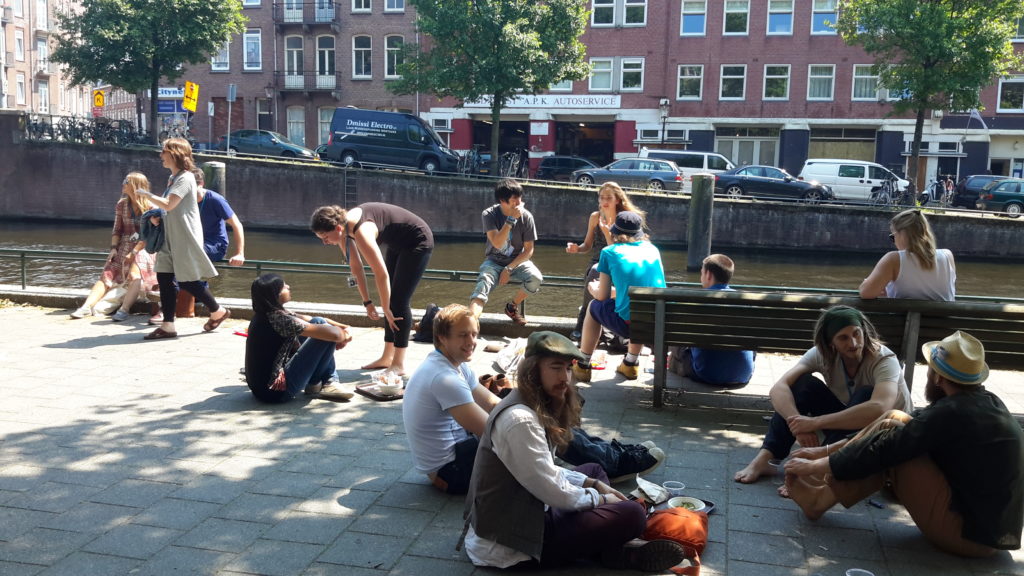I just came back from ICPR, The interdisciplinary conference on psychedelic research, where I presented my work, a theoretical model based on the predictive processing framework and current Neuroscience data that explains the psychedelic phenomenon. It was really well received and many people asked to have access to the slides and manuscript for the paper me and my supervisor are writing so here they are:
I’m all for sharing data so use it as you wish but please give us credit for this work.
And here is an ameture vid taken of the lecture itself.
I’ll end with a few anthropological experiences and very interesting data I learned in other lectures so read on if you are interested:
In the last conference I went to I was the only one that sat on the grass and ate lunch, getting stared at by all the other participants siting at the tables. This conference was a lot more laid back. Lots of us took our Lunch to sit on the edge of the canal. Many deep, personal and meaningful conversations were going on all around and I made some very interesting friendships I hope will last.
The biggest surprise to my was how much Ayahuasca research was going on and what a big part of the conference that was, most likely because in many countries it is still legal and used by many as a religious and healing ritual.
One of the most interesting finding it this research was that Harmine, a substance in Ayahuasca, seems to induce neurogenesis, creating more neurons in the brain. This can have massive implication for many degenerative diseases.
The down side of focusing on this research is the massive use of the word ‘spirituality’ which I am highly allergic to, due to my religious upbringing and very skeptical thought panels. The conference had two panels running at the same time, neuroscience vs spirituality. The spiritual panel got the bigger room and a much bigger audience. I seemed to be the only one concerned with this. When I asked about the scientists thought’s on this in the neuroscience panels I wasn’t taken seriously and got the answer “Well we are reductionists so we are ok with the small room”.
Partially to combat this ‘spiritual’ take over, and mostly because I found it amusing, I walked around with my rubber hand showing people how easy it is to trick their brain into thinking a rubber hand is a part of them. Explaining the brain is a predictive machine that just correlates sensory inputs and that these feeling of ‘oneness’ happen when you mess around with these predictive abilities and the brain stopes being able to differentiate between the self-organism and the environment. For me these explanations don’t reduce the ‘magic’ of psychedelics they increase them, but I always loved seeing behind the scenes of how magic tricks work.
This is not to say that we can’t learn from traditional rituals but we should sift through the data carefully. And just to show that I’m not totally closed minded here is a great story from the Ayahuasca tradition. A person comes to a shaman asking for advice.
‘I have two wolves inside of me. One is kind and loving and the other is full of hate and anger. Which one will take control? ‘ He asked.
The shaman think for a moment and answers, ‘The one that is fed more’.
I love this story because this really is the essence of what we are, feedback loops. And the best thing we can do is put our self in a loving and nourishing environment and practice the things we want to get better at.
Finally, in lectures regarding MDMA therapy I was pleased to hear that some of the methods I’ve been using to deal with my shit are being used in therapy. For instance, drawing brain maps and using objects and music to anchor good memories to, so they can be easily retrieved by looking, touching the object or listening to the music.


